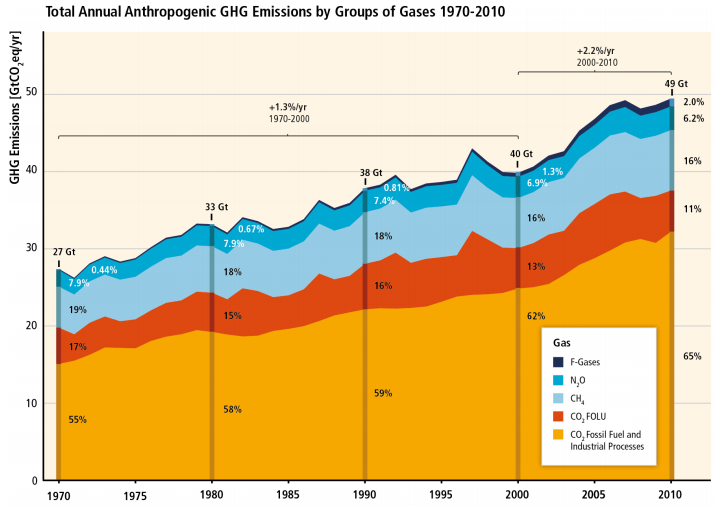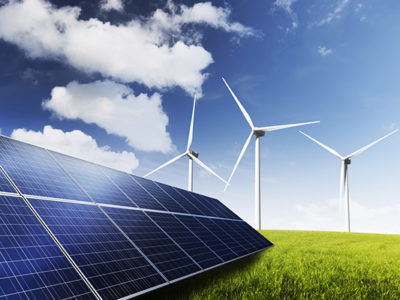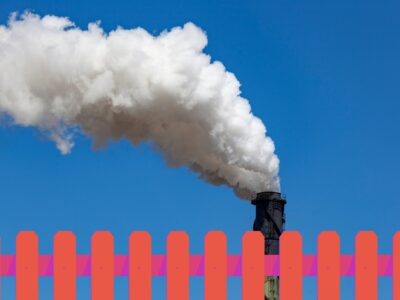IPCC Report Highlights Need for Rapid Shift to Renewable Energy; Delay Will be Costly
Meanwhile, EPA Considers Methane Regulations for Oil and Gas Production
According to the newest Intergovernmental Panel on Climate Change (IPCC) mitigation report, only a few decades remain to halt the worst effects of global climate change. To meet climate goals, globally we will need to reduce emissions to 40 to 70 percent below today’s levels, by mid-century. Delaying action will be enormously costly from an economic, human, and environmental standpoint.
The IPCC Working Group III report, written by 235 scientists from 52 countries, serves as a potential road map for policymakers who will be negotiating a new climate treaty next year in Paris at the 21st session of the Conference of the Parties to the UNFCCC. It may also serve as a call to action for domestic and state policy measures in the near term.
Our Current Path is Unsustainable
We’re currently on pace for between a 3.7°C and 4.8°C rise in average temperature by the end of the century. This could lead to “substantial species extinctions” and “large risks to global and regional food security,” among other grave health, environmental and economic impacts. According to the World Bank, “there is no certainty that adaptation to a 4°C world is possible.”
Limiting this to a 2°C rise, which is recommended to avoid the most severe effects, will require “substantial cuts in anthropogenic GHG emissions through large-scale changes in energy systems and potentially land use.” A 2°C rise equates to atmospheric concentration levels of about 450 ppm CO2 equivalent by 2100.
In the past decade, total anthropogenic GHG emissions were the highest in human history. Emissions from fossil fuel combustion and industrial processes contributed approximately 78% of the total GHG emission increase from 1970 to 2010.
 Significant Changes Are Needed in the Global Energy Mix
Significant Changes Are Needed in the Global Energy Mix
The IPCC mitigation report offers a menu of potential options to stay within a 2°C rise, but all require global cooperation and immediate action.
The report calls for substantial increases in the proportion of electricity generated from renewable sources. We will need to triple or quadruple the share of clean energy that we currently use, which will require technological advances, financial resources, and policy changes, such as shifting subsidies away from fossil fuels and towards renewables such as solar, wind and hydroelectric power. The report also calls for increased levels of nuclear energy as a “mature low‐GHG emission source of baseload power.”
The report also notes that natural gas has a role to play in reducing emissions “provided that natural gas is available and the fugitive emissions associated with extraction and supply are low or mitigated.” The report states that natural gas can act as a “bridge technology,” with deployment “increasing before peaking and falling to below current levels by 2050 and declining further in the second half of the century.” Thus, natural gas has a temporary role, but only if fugitive methane emissions can be curbed. And it must be produced safely, as our prior work on hydraulic fracturing has emphasized.
The report also highlights the need to use and scale technologies such as carbon capture and sequestration (CCS) and bioenergy: “Many models could not achieve atmospheric concentration levels of about 450 ppm CO2 eq by 2100, if additional mitigation is considerably delayed or under limited availability of key technologies, such as bioenergy, CCS, and their combination (BECCS).”
Urban Density and Behavioral Patterns Are Important
We need to make smart land use decisions today that encourage higher density living. The reports notes, “Effective mitigation strategies involve packages of mutually reinforcing policies, including co‐locating high-residential with high-employment densities, achieving high diversity and integration of land uses, increasing accessibility, and investing in public transport and other demand-management measures.” 
Emissions can also be substantially lowered through changes in behavior: driving less, reducing household energy use, making dietary changes, and reducing food waste all play a role in achieving global reductions in CO2.
The transportation sector accounted for 27% of total energy use in 2010, with baseline CO2 emissions projected to approximately double by 2050. Mitigation efforts cited in the report, such as integrated urban planning, transit-oriented development, improved fuel efficiency, and electric vehicles can reduce transportation emissions by 20 to 50% in 2050, compared to the baseline.
The Cost of Mitigation is Relatively Modest Now, But Increases With Delay
Estimates of the aggregate economic costs of mitigation “vary widely” according to the new report, and are highly dependent on assumptions and specific mitigation scenarios. That said, the panel estimates that mitigation scenarios that achieve 450 ppm CO2 eq. by 2100 result in annualized reduction of consumption growth by only 0.06% over the century. This means that instead of a growth rate of about 2% per year, we would see a growth rate of 1.94% per year. However, some countries would face larger economic impacts than others, depending on natural resources and other factors. This cost figure does not account for the benefits and co-benefits of reduced climate change, such as avoided health impacts, agriculture loss, and damage to coastal properties from sea level rise. The costs of not acting on climate change have been estimated to be much higher (see, e.g., Nordhaus (2012) and Stern (2006)).
The modest .06% annualized reduction in growth figure assumes that all countries begin mitigation actions immediately, there is one global price on carbon, and all key technologies are available – optimistic assumptions. Starting later will dramatically increase the economic cost, and may make a 2°C ceiling impossible under many mitigation scenarios. The longer we wait, the more difficult and costly it will be to avoid catastrophic global warming.
Meanwhile, U.S. EPA Considers Methane Regulations for Oil & Gas Production
Amidst the global attention to the IPCC report, U.S. EPA released five technical white papers focusing on potentially significant sources of methane and volatile organic compounds (VOCs) in the oil and gas sector, covering emissions and mitigation techniques. The reports follow the March 28 release of a key element called for in the President’s Climate Action Plan: a Strategy to Reduce Methane Emissions. The methane strategy is intended to help the administration achieve its overall goals of reducing U.S. greenhouse gas emissions 17 percent below 2005 levels by 2020. The five new white papers summarize the sources of methane emissions from components of oil and gas production and recommend steps to reduce emissions.
Methane has a global warming potential more than 20 times greater than that of carbon dioxide, and methane emissions are projected to increase through 2030 if additional action is not taken. EPA will determine this fall whether to set standards under Section 111 of the Clean Air Act, or issue Control Techniques Guidelines under Section 182 of the Act, for methane emissions from oil and gas production sources. In 2012, EPA issued final regulations to reduce the emission of VOCs, establishing the first federal air pollution standards for hydraulically fractured natural gas wells. EPA estimates that the rules will yield a cost savings of $11 to $19 million by 2015, because the value of natural gas and condensate that will be recovered and sold from “green completions” will offset the costs of compliance.
I anticipate that EPA methane regulations would further reduce GHG emissions, in line with domestic climate goals. However, this should be part of a coordinated domestic energy strategy to reduce reliance on fossil fuels and support renewable energy on an accelerated timetable, per the IPCC report’s latest assessment and call to action.
Reader Comments
2 Replies to “IPCC Report Highlights Need for Rapid Shift to Renewable Energy; Delay Will be Costly”
Comments are closed.








Excellent post Jayni. I want to thank you and your colleagues for all of your excellent efforts to protect our environment, but there is still far too much confusion in reports produced by the scientific community
For example, Nature News 15 April 2014 reported “IPCC report under fire –
Critics attack panel’s lack of specific guidance on how countries should lower emissions.”
Business as usual has failed completely, we must find a better way to communicate with and educate the general public to force our leaders to take action because we have already run out of time if we continue with our traditional way of making the right things happen, they aren’t happening.
Jayni, I subscribe to Mother Jones’ advice to Fight Like Hell For The Living, and I appreciate the efforts that Legal Planet professors and scholars make in our behalf.
However, there is one human limitation that we must recognize and overcome immediately if we are going to be successful in saving the planet in time, and that is E.O. Wilson’s warning “far-off catastrophes engineered by our on species, are simply out of the range of human capacity for planning and action.”
A worst case example is that even though the atmospheric river was so extraordinarily cut off this year, Southern Californians still water our lawns as if nothing is happening.
It is most definitely time for social scientists at UC to join together and inform the public about the realities and consequences of our failures so we can expedite the implementation of solutions.
But we must also achieve large scale fusion energy generation with the greatest sense of urgency to provide for worldwide energy needs because the late Sir John Maddox warned us that “Unconventional sources of energy, although free from CO2 emission, are physically incapable in the next century of substituting for any but a small part of present energy consumption.”